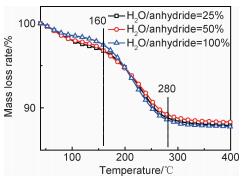 PDF(1891 KB)
PDF(1891 KB)


黏度可控化制备BPDA-PDA型聚酰亚胺及表征
倪洪江, 邢宇, 戴霄翔, 李军, 张代军, 杨士勇, 陈祥宝
材料工程 ›› 2019, Vol. 47 ›› Issue (11) : 100-106.
 PDF(1891 KB)
PDF(1891 KB)
 PDF(1891 KB)
PDF(1891 KB)
黏度可控化制备BPDA-PDA型聚酰亚胺及表征
 ({{custom_author.role_cn}}), {{javascript:window.custom_author_cn_index++;}}
({{custom_author.role_cn}}), {{javascript:window.custom_author_cn_index++;}}Viscosity-controllable preparation and characterization of BPDA-PDA polyimide
 ({{custom_author.role_en}}), {{javascript:window.custom_author_en_index++;}}
({{custom_author.role_en}}), {{javascript:window.custom_author_en_index++;}}
| {{custom_ref.label}} |
{{custom_citation.content}}
{{custom_citation.annotation}}
|
/
| 〈 |
|
〉 |